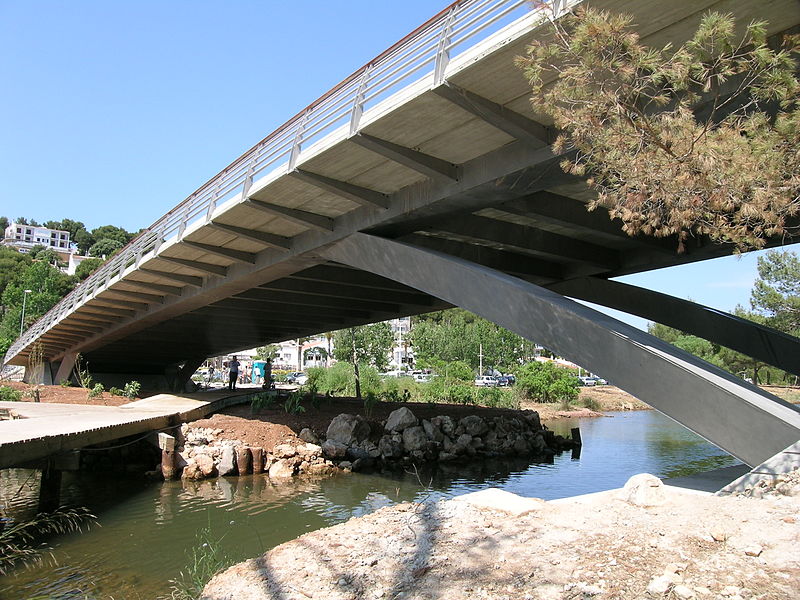





Stainless steel is one of the most important alloys of steel. Stainless steel contains iron, chromium and carbon as the most important elements. It has minimum of 11% of chromium.
Chromium has an affinity for oxygen. The chromium oxide is a stable oxide. It forms a very thin protective film on the surface of alloy steel. This film is impervious to further reaction
between iron and surrounding atmosphere. Chromium helps in building corrosion and oxidation resistance. It also provides pleasing appearance to stainless steel. The other elements that
are added to stainless steel are nickel, molybdenum, manganese, cobalt, silicon, niobium, titanium and aluminium. The stainless steel has wide range of applications. It shows good
resistance to corrosion and oxidation. It is resistant to scaling. It has good creep resistance. The ductility and formability character of stainless steel is very high. It has good
machinability character. It has high strength and hardness. Stainless steel may be divided into 5 categories:
Ferritic stainless steel (Cr-17-20%) It is an alloy of iron and chromium. It is ferritic in structure up to the melting point.
It contains small amount of carbon, manganese, silicon, nickel, aluminium, molybdenum and titanium. The carbon content is kept as low as possible to improve toughness and to
reduce sensitization. It is corrosion resistant. This resistance increases with addition of chromium and molybdenum. It is free from stress corrosion. It is ductile and hot and
formability is reasonable when cold. The ferritic stainless steel is corroded in contact with chloride and sulphur dioxide. Intergranular corrosion is also observed in the heat
affected area.
Martensitic stainless steel (Cr-12-17%, C-0.12-1.2%) This type of stainless steel is austenitic at temperature 950'C -1000'C.
But it is transformed to martensitic steel on cooling. As the chromium content increases, the hardenability of the alloy also increases. It may be divided into
two categories: a) Low carbon high strength martensitic stainless steel b) High carbon high strength martensitic stainless steel .The low carbon varietibilty has good weldebility,
formability and toughness character. It is used in petrochemical and chemical industries. It is also used in gas turbine engine, turbine blade, on power plant, compressor
and aircraft structure and propeller shaft in ships. The strength of martensitic stainless steel can be increased by increasing the carbon content. So, the high carbon variety
has applications in razor blades, surgical equipments, high temperature equipments and cutleries.
Austenitic stainless steel (Cr-16-25%) This type of stainless steel has sufficient amount austenite stabilizing elements like nickel and manganese along with chromium.
This alloy steel is non magnetic and very tough. It is corrosion resistant and resistant to high temperature oxidation. It is used for house hold utensils, steam pipes, boiler
tubes and furnace parts. When a little amount of molybdenum is added, steel's resistance to corrosion increases. Addition of titanium and niobium increases its resistance to chemical
corrosion. Therefore, it has application in sea water and brackish water condition. It has also application in offshore platforms, underwater pipes, and paper and pulp industries
Duplex stainless steel (Cr-23-30%, Ni-2.5-7%) This stainless steel contains ferrite and austenite in the microstructures. So, it is called ferritic-austenitic steel
or duplex stainless steel. Along with chromium and nickel, titanium and molybdenum is also added to it. It is very strong and show resistance to corrosion. It is not affected by
stress corrosion and cracking. This type of stainless steel has wide ranging applications and underwater pipes.
Precipitable-Hardenable stainless steel (Cr-11-12.5%, Ni-0.05%, Mo-0.04-0.15%, Co-0.04-0.15%) This type of steel is produced by the vacuum melting process.
So, it has application in the boiler operations and power plants. The quality may be improved by increase in the elements like chromium, nickel and molybdenum. It has a micro-structure
with combination of austenite and martensite structure